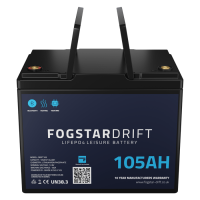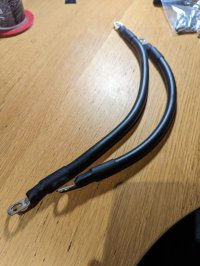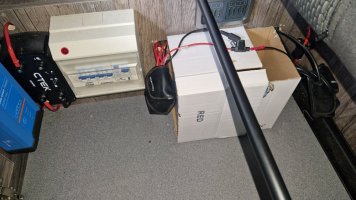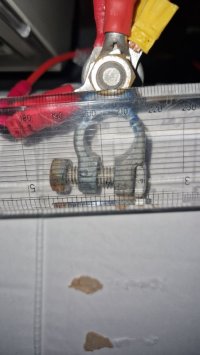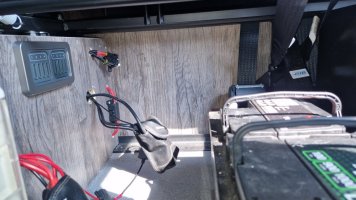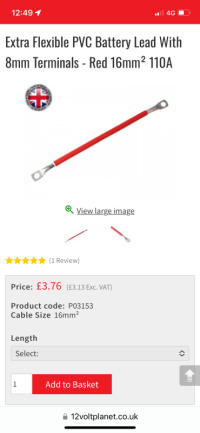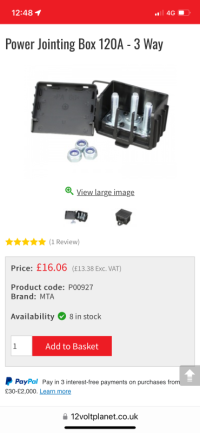I would just like to clarify this as I'm a little confused (although I may be misunderstanding). The holes the cables emerge through is in the 'permanent' side panel so there is no access to the other side of those holes without ripping out the paneling. When the battery box (actually just a side and a lid - no ends and the other side is the panel the cables emerge though) is in place, the cables are emerging inside it adjacent to the battery terminals.
So the busbars will have to be screwed to the outside of the fixed panel near the holes and the cables will still emerge through the holes and then connect to the busbar. I am a little concerned about the corners these cables will have to go around as obviously they can't be the same orientation as the battery terminals.
Also, the existing battery sits against the fixed side panel providing some stability so that screwing it to the floor on one side only worked. The new one, however, presumably can't sit against the permanent 'wall' panel as it's height will cover at least one of the holes the cables emerge through.
Appreciate it if we could just clear up anything I'm misunderstanding.

